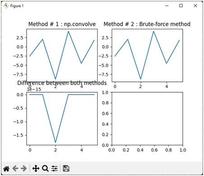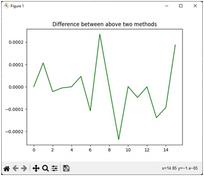Differential Encoder and Decoder Python Script
Advertisement
This document provides Python code for a differential encoder and decoder, designed for binary data input. It explains the concepts and provides functional scripts using modulo-2 sum and delay.
Introduction
A binary differential encoder is an electronic circuit that transforms a binary input signal (a sequence of ones and zeros) into a differential output signal. This technique is commonly used in digital communication systems to facilitate bit error detection and correction. By reducing the impact of noise, it enhances the reliability and accuracy of both digital communication and data storage. Differential encoders/decoders find applications in various domains, including data transmission/reception, data storage devices, Analog-to-Digital Converters (ADCs), motor control, and Digital Signal Processing (DSP) systems.

Figure 1: Differential Encoder
Figure 1 illustrates a differential encoder circuit employing a modulo-2 SUM logic gate (EX-OR) combined with a delay element. The input binary data bits are subjected to a modulo-2 SUM operation with the previous output bits.
The mathematical representation of the differential encoder is as follows:
Where:
- is the current encoded bit.
- is the current data bit.
- is the previous encoded bit.
- represents the modulo-2 sum (XOR) operation.
Differential Decoder

Figure 2: Differential Decoder
Figure 2 shows the differential decoder circuit. The current input and a delayed version of the same input are fed into a modulo-2 sum operation, generating the output bits.
The mathematical equation for the differential decoder is:
Where:
- is the current decoded bit.
- is the current encoded bit.
- is the previous encoded bit.
Differential Encoder and Decoder Python Script
The following Python code demonstrates how to generate differentially encoded data and recover the original binary data using a differential decoder.
# Differential encoder python script
input_data = [1, 1, 1, 1, 1, 0, 0, 1, 1, 1, 1, 1, 0, 1]
output_data = [input_data[0]]
delay = 0
for i in range(1, len(input_data)):
mod_2_sum = (input_data[i] + delay) % 2
output_data.append(mod_2_sum)
delay = output_data[i]
encoded_data = output_data
print("Input data:", input_data)
print("Encoded data:", encoded_data)
# Differential decoder python script
input_data = encoded_data
output_data = [input_data[0]]
delay = 0
for i in range(1, len(input_data)):
decoded_value = (input_data[i] + delay) % 2
output_data.append(decoded_value)
delay = input_data[i]
decoded_data = output_data
print("Decoded data:", decoded_data)
Differential Encoder and Decoder Output
The following image shows the outputs at various stages of the differential encoder and decoder Python code, including the binary data input, the encoder’s output, and the decoder’s output, which should match the original binary data.

Advertisement
 RF
RF






